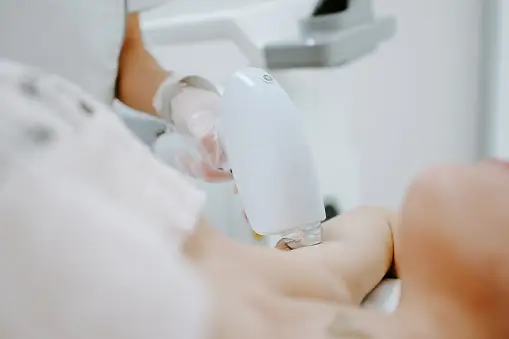The number of laser hair removal treatments required to achieve permanent hair reduction can vary widely from person to person. Several factors influence the number of sessions needed, including:
- Hair color and type: Dark, coarse hair generally responds better to laser treatment than fine, light-colored hair. Light blonde, gray, or red hair may be less responsive, and more sessions could be required.
- Skin tone: Laser hair removal works best on individuals with a light complexion and dark hair, as the contrast between the hair and skin makes it easier for the laser to target the hair follicles without affecting the surrounding skin. People with darker skin may require more sessions and need to use specialized lasers designed for their skin type.
- Treatment area: Smaller areas like the upper lip or underarms may require fewer sessions than larger areas like the legs or back.
- Hormonal factors: Hormonal imbalances, such as polycystic ovary syndrome (PCOS), can lead to increased hair growth. In such cases, more sessions may be necessary, and maintenance treatments may be needed in the long term.
- Genetics: Genetic factors can play a role in how many sessions are needed. Some individuals naturally have fewer hair follicles or slower hair regrowth, making the process quicker and more effective.
- Laser technology: The type of laser used for the procedure also matters. Different laser systems have varying levels of effectiveness, and some may require more sessions than others.
On average, most people require a series of 6 to 8 sessions spaced several weeks apart to achieve significant and long-lasting hair reduction. However, it’s important to note that laser hair removal does not usually result in 100% permanent hair removal; instead, it typically leads to a significant reduction in hair growth, which can be maintained with occasional touch-up treatments.
Consult with a licensed and experienced dermatologist or laser technician who can assess your specific hair and skin type and provide a personalized treatment plan. They can give you a more accurate estimate of the number of sessions you’ll need for the best results.

Is it possible to remove 100% of hair with laser?
Laser hair removal typically does not result in 100% permanent hair removal for most individuals. Instead, it usually leads to a significant reduction in hair growth and can be considered a long-term hair reduction solution. The reason for this is that hair grows in different phases, and laser hair removal is most effective on hair that is in the active growth phase (anagen phase). Not all hair follicles are in this phase at the same time, which is why multiple sessions are required to target as many follicles as possible.
After completing a series of laser hair removal sessions, many people experience a substantial reduction in hair density and thickness. They may also notice that the remaining hair is finer and lighter in color. Some individuals may achieve near-complete hair removal in treated areas, especially if they have ideal candidates with light skin and dark hair.
However, it’s important to understand that a few factors can influence the level of success and the extent of hair reduction achieved:
- Individual variation: People’s responses to laser hair removal vary based on their hair and skin type, genetics, and hormonal factors.
- Maintenance: Even after an initial series of sessions, some hair regrowth may occur over time. Periodic maintenance sessions may be necessary to keep the hair at bay.
- Hormonal changes: Hormonal fluctuations, such as those related to pregnancy or certain medical conditions, can trigger new hair growth, potentially necessitating additional treatments.
- Incomplete treatment: If all hair follicles are not effectively treated during the initial sessions, some hair may persist.
While laser hair removal may not guarantee 100% permanent hair removal, it remains a popular and effective option for reducing unwanted hair. For individuals seeking a more permanent solution, other methods like electrolysis can be considered, although this approach is generally more time-consuming and may also require multiple sessions. Consult with a qualified dermatologist or licensed practitioner to determine the best hair removal method for your specific needs and expectations.
